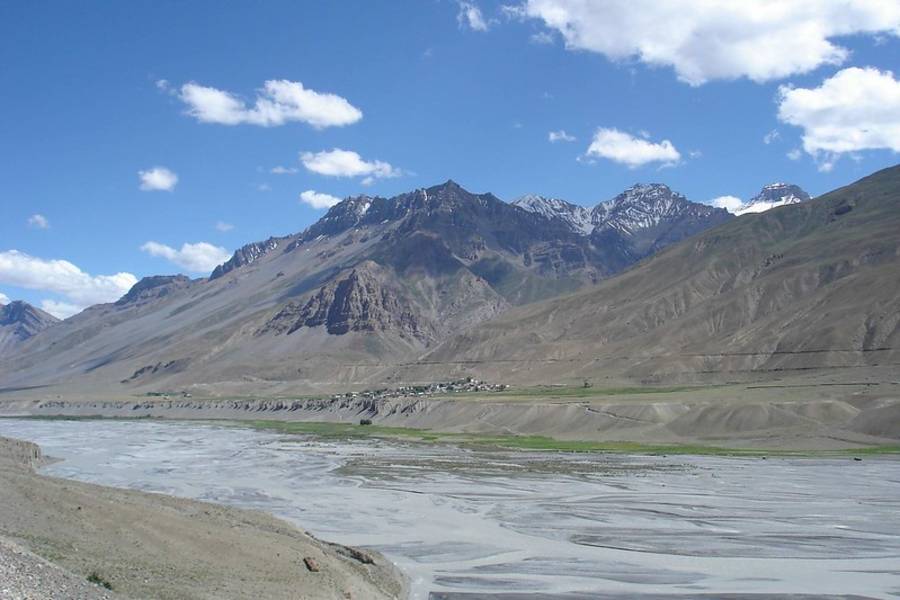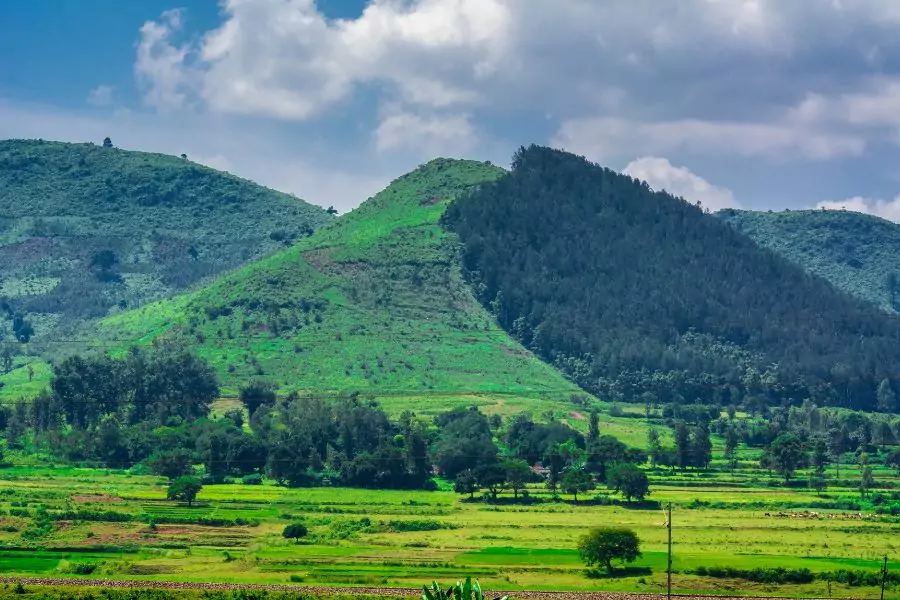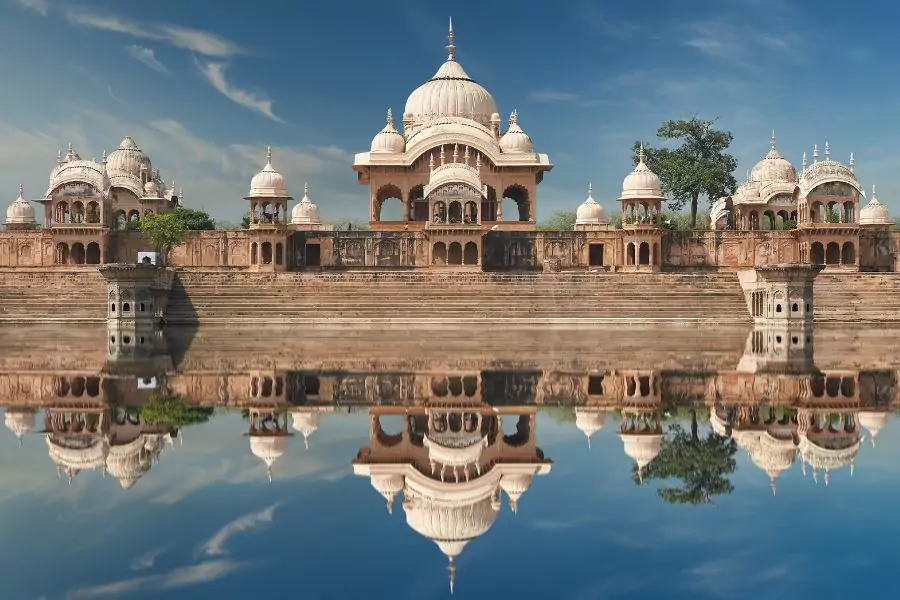Kibber Monastery
Kibber Monastery, Himachal Pradesh
Kibber Monastery, also known as Kye Gompa, is a Tibetan Buddhist monastery located in the Spiti Valley of Himachal Pradesh, India. It is one of the most important and ancient monasteries in the region, and is situated at an altitude of about 4,166 meters (13,668 feet) above sea level.
The monastery was founded in the 11th century by Dromton, a disciple of the famous Tibetan Buddhist master, Atisha. It is home to a large collection of Buddhist scriptures, murals, thangkas, and other artifacts. The monastery also serves as a training center for young monks who wish to pursue a life of spiritual practice and study.
Kibber Monastery is known for its unique architecture, which is a blend of Indian and Tibetan styles. The main prayer hall of the monastery has a large statue of Maitreya Buddha, which is said to be over 600 years old. The monastery also has a large library, a courtyard, and a number of meditation rooms.
The monastery is surrounded by picturesque landscapes, and is a popular destination for tourists and trekkers who visit the Spiti Valley. Visitors can participate in meditation sessions and learn about the history and culture of the region. Kibber Monastery is also home to several festivals and rituals, which are celebrated throughout the year.
Historical Significance
Kibber Monastery has significant historical and cultural importance in the region. Here are a few key points of its historical significance:
- Age: Kibber Monastery is one of the oldest monasteries in the Spiti Valley, and is believed to have been founded in the 11th century by Dromton, a disciple of the famous Tibetan Buddhist master, Atisha.
- Cultural Exchange: The monastery has been a center for cultural exchange between the people of Tibet, India, and Ladakh for centuries. The monks of Kibber Monastery have played an important role in promoting the spread of Buddhism in the region.
- Preservation of Culture: The monastery has been a key institution in preserving the rich cultural heritage of the region. Its collection of Buddhist scriptures, murals, thangkas, and other artifacts provide valuable insights into the history, art, and culture of the region.
- Political Significance: Kibber Monastery was a site of political significance during the 19th century when the British were expanding their influence in the region. The monastery served as a center of resistance against the British and played a key role in organizing local uprisings.
- Religious Significance: Kibber Monastery has been an important center for Buddhist practice and study for centuries. It is a place of pilgrimage for Buddhists from all over the world, who come to study and meditate in the peaceful surroundings of the monastery.
Overall, Kibber Monastery is a cultural and historical treasure of the Spiti Valley and an important part of the heritage of the region.
Things to do
There are several things to do at Kibber Monastery, which is a great destination for those interested in history, culture, and spirituality. Here are a few things to do at Kibber Monastery:
Visit the Monastery:
The monastery is the main attraction in the area, and it’s worth exploring. You can take a guided tour of the monastery and learn about its history, culture, and artifacts. You can also attend prayer sessions and witness the daily life of the monks.
Trekking:
Kibber Monastery is surrounded by stunning landscapes, and there are several trekking routes in the area that provide a chance to explore the stunning Himalayan mountains. One of the most popular treks in the region is the Kibber to Tso Moriri trek, which takes you through high mountain passes, remote villages, and breathtaking landscapes.
Photography:
The Spiti Valley is a photographer’s paradise, and Kibber Monastery is no exception. The stunning landscape and unique architecture of the monastery provide great opportunities for capturing beautiful photos.
Attend Festivals:
Kibber Monastery is home to several festivals and rituals that are celebrated throughout the year. The most popular festival is the Losar festival, which is celebrated in February or March to mark the Tibetan New Year. The monastery also celebrates other festivals like the Chaam Dance and the Gustor Festival.
Meditation:
Kibber Monastery is a great place to practice meditation and mindfulness. Visitors can participate in meditation sessions, learn about Buddhist philosophy, and experience the peaceful surroundings of the monastery.
Homestay:
There are several homestays in the area that offer visitors a chance to experience the local culture and lifestyle. You can stay with a local family, enjoy traditional meals, and learn about the local customs and traditions.
Overall, Kibber Monastery offers a unique and enriching experience for visitors, providing an opportunity to connect with history, culture, and spirituality.
Where to Stay
There are several options for accommodations near Kibber Monastery. Here are a few suggestions:
- Monastery Guest House: The monastery itself offers guest rooms for visitors, which are clean and basic. This is a great option for those who want to immerse themselves in the spiritual and cultural atmosphere of the monastery.
- Homestays: There are several homestays in Kibber and the surrounding villages, which offer visitors a chance to experience the local culture and lifestyle. Homestays are often run by local families, who provide comfortable rooms, home-cooked meals, and a warm welcome.
- Guesthouses: There are several guesthouses and lodges in Kibber and the nearby villages that offer basic accommodations, hot water, and comfortable rooms. Some guesthouses also have in-house restaurants.
- Camping: There are several camping options in the region, which offer a unique experience of staying in the lap of nature. Some campsites provide tents, meals, and other amenities.
It’s recommended to book your accommodation in advance, especially during peak season (May to October). It’s also important to note that the facilities in the area are basic and sometimes limited, so it’s always a good idea to check with the accommodation provider about what’s available and what to expect.
Kibber Wildlife Sanctuary
Kibber Wildlife Sanctuary is a protected area located in the cold desert region of the Spiti Valley. The sanctuary was established in 1992 and covers an area of approximately 2,200 square kilometers. The sanctuary is home to several rare and endangered species of wildlife, including snow leopards, Tibetan wolves, and ibex. Here are some key features and activities of Kibber Wildlife Sanctuary:
- Wildlife: The sanctuary is home to a wide variety of wildlife, including the snow leopard, Tibetan wolf, Himalayan blue sheep, ibex, red fox, and several species of birds. The sanctuary is particularly known for its snow leopard population, and visitors can take guided tours to spot these elusive big cats in their natural habitat.
- Trekking: Kibber Wildlife Sanctuary offers several trekking routes that pass through stunning landscapes, high-altitude lakes, and remote villages. The most popular trek in the sanctuary is the Pin-Parvati trek, which takes you through alpine forests, snow-capped mountains, and the Pin-Parvati pass.
- Camping: Visitors can camp at several locations in the sanctuary, which provide a unique experience of staying in the midst of nature. Camping sites are often set up near high-altitude lakes or rivers, and visitors can enjoy bonfires and stargazing at night.
- Bird Watching: The sanctuary is home to several species of birds, including the Himalayan snowcock, chukar partridge, and Himalayan griffon vulture. Visitors can take guided bird watching tours to observe these magnificent birds in their natural habitat.
- Local Culture: The sanctuary is home to several villages, which are predominantly inhabited by the Spiti Valley’s indigenous population. Visitors can learn about the unique culture and traditions of the local people by interacting with them and visiting their homes.
Overall, Kibber Wildlife Sanctuary offers a unique and enriching experience for visitors, providing an opportunity to connect with nature, wildlife, and local culture.
How to reach
Kibber Monastery and Kibber Wildlife Sanctuary are located in the Spiti Valley of Himachal Pradesh, India. Here are some ways to reach Kibber:
- By Road: Kibber is accessible by road from the cities of Shimla and Manali. From Shimla, you can take the NH5 highway to reach Kaza, the main town in the Spiti Valley. From Kaza, it’s a 20-km drive to Kibber. From Manali, you can take the Manali-Leh Highway to reach Kaza, which is approximately 200 km away.
- By Bus: There are regular bus services from Shimla and Manali to Kaza, which is the main town in the Spiti Valley. From Kaza, you can take a local taxi or hire a private vehicle to reach Kibber.
- By Air: The nearest airport to Kibber is the Kullu-Manali Airport, which is approximately 250 km away. There are daily flights from Delhi and Chandigarh to Kullu-Manali. From the airport, you can take a taxi or bus to Kaza, and then hire a local taxi to reach Kibber.
- By Train: The nearest railway station to Kibber is the Shimla Railway Station, which is approximately 425 km away. From the railway station, you can take a taxi or bus to Kaza, and then hire a local taxi to reach Kibber.
It’s important to note that the roads to Kibber are often narrow and winding, and the terrain is rugged, so it’s recommended to travel with an experienced driver or a local guide. Additionally, it’s advisable to carry warm clothing, as the weather in the region can be quite cold and unpredictable.



